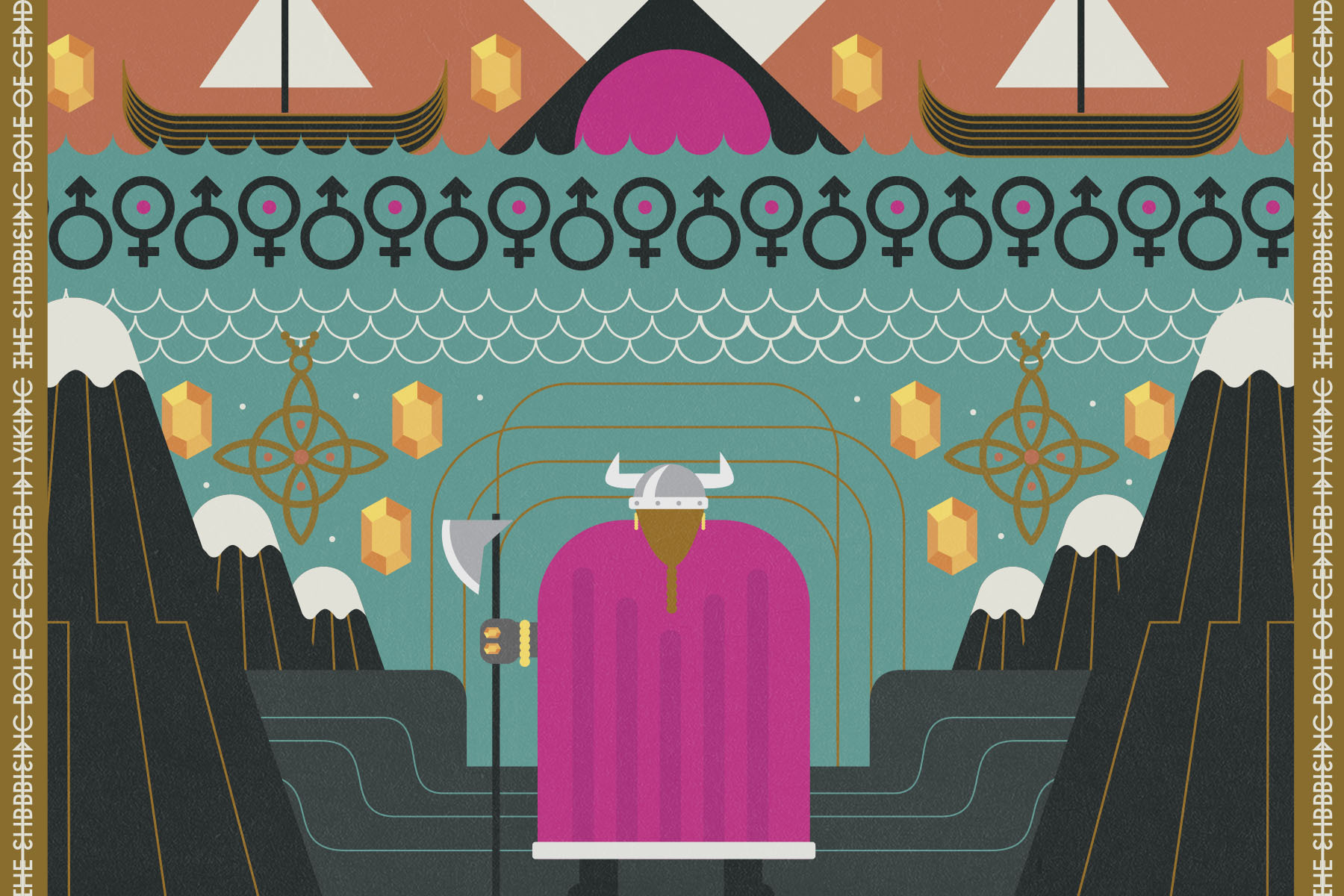
- Home |
- Search Results |
- Unpacking the Viking caricature of masculinity
Unpacking the Viking caricature of masculinity
Neil Price, author of The Children of Ash & Elm: A History of the Vikings, explains how within the 'longships and plundering' of Viking society we can find a more complicated picture of masculinity than you might expect.
Ask anyone about the Vikings today, and most will instantly summon an image of longships coursing the seas, decks crowded with long-haired, muscled warriors on their way to plunder and burn, howling their allegiance to Odin and other Norse gods of blood and war. In recent years, full-body tattoos have been added to the picture, as the popular perception of the Vikings does nothing if not reflect the times. The scene is resolutely maritime, violent – and male, to the extent that the Vikings have become almost a caricature of masculinity.
Beyond the stereotype, there is a cold truth to Viking male violence. At the height of the ninth-century raids, Viking armies shattered the political structures of western Europe: the loss in blood and treasure was immense, thousands were violated and enslaved. There were parallels at home too, not just in the form of civil warfare between rival petty-kingdoms, but also in domestic violence. The Scandinavian law codes, written down in the centuries immediately after the Viking Age but incorporating much that was clearly older, include sickening details of offences against women: injuries that caused the loss of an eye, wounds that penetrated “the brain, the body cavity, or the marrow”. Today there are those who tend to glorify the Vikings in their male, militaristic incarnation, but this is a mistake; they were no heroes, at all.
One effect of the monolithic ‘Viking Man’ cliché has been that gender studies of the period have largely (and understandably) tended to focus on women. This has given us excellent surveys of the female life course, redressing imbalance and also nuancing an almost equally typecast view of Viking womanhood. What it has not done, ironically, is correct the skewed perception of Viking masculinity itself.
Viking society laid clear expectations of behaviour on its citizens, especially regarding class and social status: there was little equality, either before the law or in everyday life. Viking men included the famous (and vicious) Viking raiders, certainly, but they existed alongside men of middling rank, farmers just about scraping by, the impoverished and disadvantaged, the differently abled, and – very much – an entire world of thralls, the slaves who were so integral to the Viking economy, and who were abused and exploited in every way. The warrior male ideal was one reality, but hardly the whole picture of masculinity in Scandinavian society.
Sexuality was an important component of Viking perceptions of the individual, linked not only to behaviour but also to complex notions of integrity and morality. Heterosexual marriage was the notional norm to which men were supposed to aspire, though in practice many were excluded through the practice of polygyny (i.e. a man could have multiple wives and concubines, while a woman could form an attachment to only one man). Although Scandinavian women enjoyed a marked degree of legal rights and in some circumstances could exercise considerable power, Viking-Age society was built around an essentially patriarchal worldview that saw female bodies as political currency in webs of alliances formed through marriage and other connections. If misogyny was part of Viking masculinity, this was combined with other prejudices: the laws of Viking-Age Scandinavia were among the most homophobic in world history.
Engaging in gay sex was regarded as abhorrent, not only in bodily terms but as an abdication of honour, an ‘unmanliness’ that undermined every expectation of male behaviour, bravery in war and social reliability. Suites of laws codified homophobic insults (which were clearly common), in that to falsely accuse a man of such behaviour was an offence equivalent to murder.
In burial excavations, a small minority of male bodies have been found dressed in women’s outfits, complete with jewellery and accessories.
Yet, as in so much of Viking life, these strictures were undermined and subverted, offering a different perspective on this otherwise bleak world. Some intriguing passages in legal codes expressly forbid both men and women to wear the clothing or hairstyle of the opposite sex – clearly implying that at least some (and perhaps more than some) people were doing just that, presumably openly. In burial excavations, a small minority of male bodies have been found dressed in women’s outfits, complete with jewellery and accessories; similarly on carved ‘picture stones’, illustrated memorials to the dead, a few bearded figures are depicted wearing what appear to be women’s gowns. Again, there is nothing clandestine about such monuments, and they suggest that behind the dry legal restrictions was a much freer spectrum of lived identity.
These apparent contradictions merge in the world of sorcery, a vital aspect of Viking spiritual life, which the laws, poetry and sagas all tell us was a shameful thing for men to practice. Despite this approbation, clearly there were still plenty of men working spells and charms, even doing so at times under royal protection. Most telling of all, the supreme master of this ‘women’s sorcery’ was universally acknowledged to be the god Odin, patron of kings and of the masculine ideal that they embodied. The being whom one Norwegian scholar has called ‘Odin the Queer’ brings us to the heart of Viking-Age gender. We are only beginning to understand its contradictions and surprises, its fluidity and tensions, and the variety of Viking lives.
What did you think of this article? Let us know at editor@penguinrandomhouse.co.uk for a chance to appear in our reader’s letter page.
Illustration: Ryan MacEachern/Penguin